
Charts
Trainer
Bêta

Flames
Play at least one chapter on the trainer every day to earn a flame.
The longer your streak grows, the more your XP is multiplied at the end of each session.
If you miss a day, your streak resets to zero.

With the Spin & Go Charts and their Strategic Guides, you’ll learn to play better, win more chips with each action, and improve faster than ever before – while (hopefully...) enjoying every step of the journey.
But to get real results at the tables, gain confidence, and most importantly… grow your bankroll, that part is up to you.
This tool isn’t a magic wand, but with a bit of consistency and by following the tips below, you’ll have all the keys you need to make the most of it.
➡️ So enjoy the learning process!
Before anything else, I strongly recommend (especially if you’re a beginner or intermediate player), that you read our free course for getting started with Spins.
It’s an almost essential starting point, especially to understand the concept of variance.

Spin & Go tournaments are an exciting format, but far from as simple as they seem.
That’s what makes them so interesting (because if they were simple, there wouldn’t be any edge to have over your opponents – and thus no money to win) but also what makes them risky.
If you get overconfident, your bankroll might quickly shrink and put you in tough spots.
That won’t happen if you follow the advice we share in this course.
And best of all – it’s completely free.
➡️ Check out the beginner Spin course.
If you're landing on the Spin Ranges and don't know where to start, here’s what I suggest:
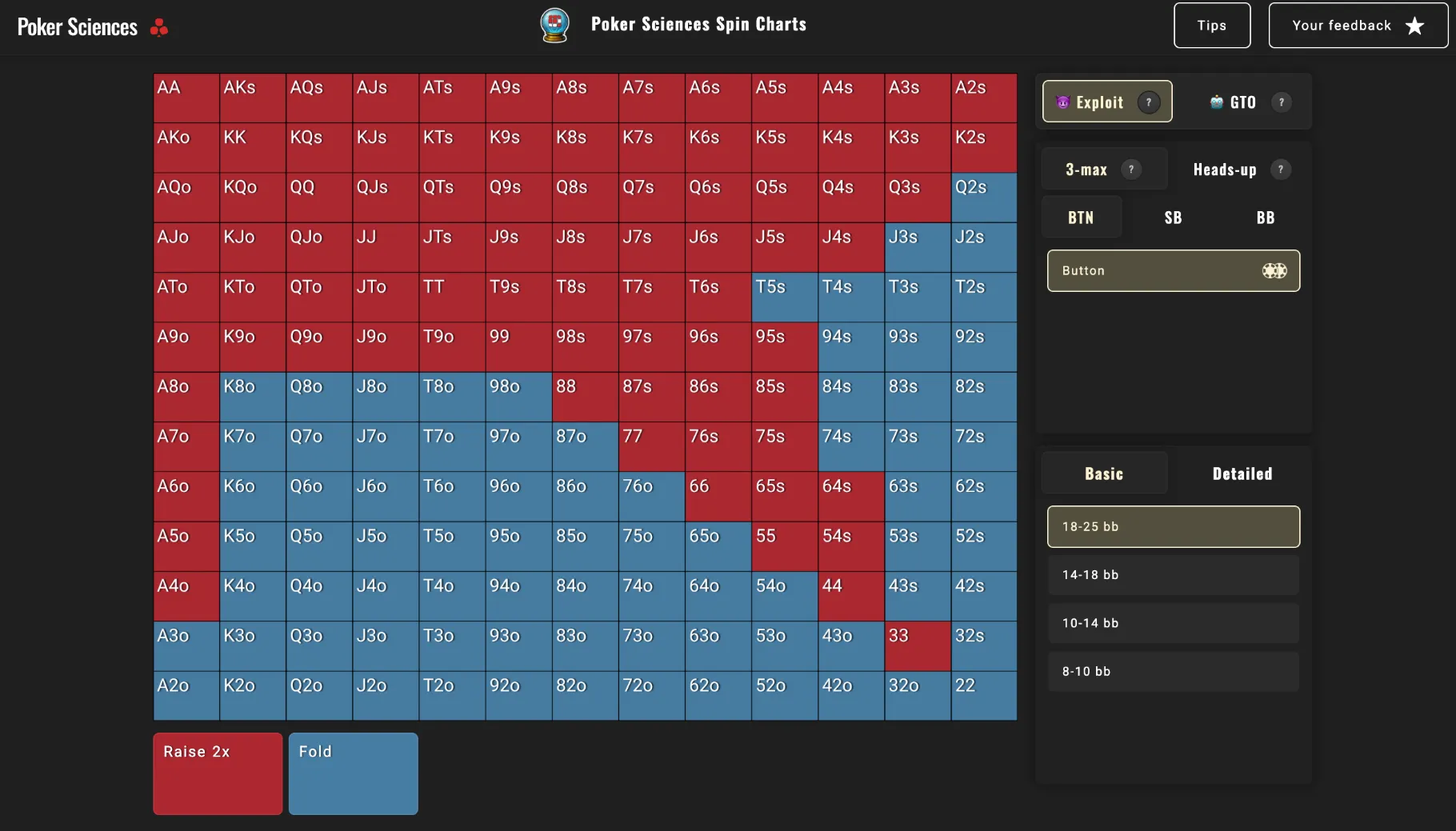
Trying to learn every single situation at once is pointless (and overwhelming).
Here’s a realistic progression plan:
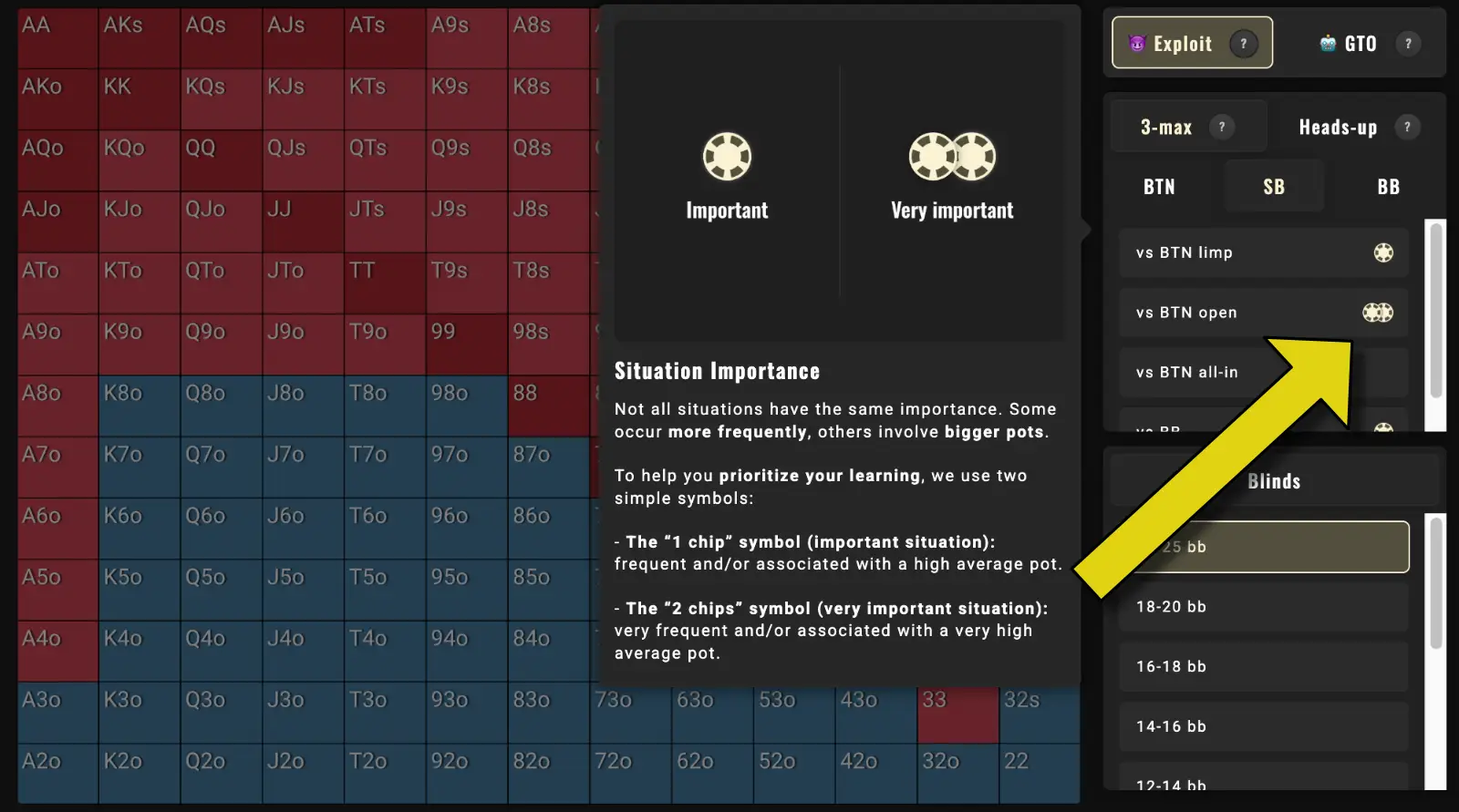
Scroll below the charts to see the Strategic Guides.
They are the core of this tool. They will help you improve without having to memorize dozens of charts – instead, you’ll learn to understand them deeply.
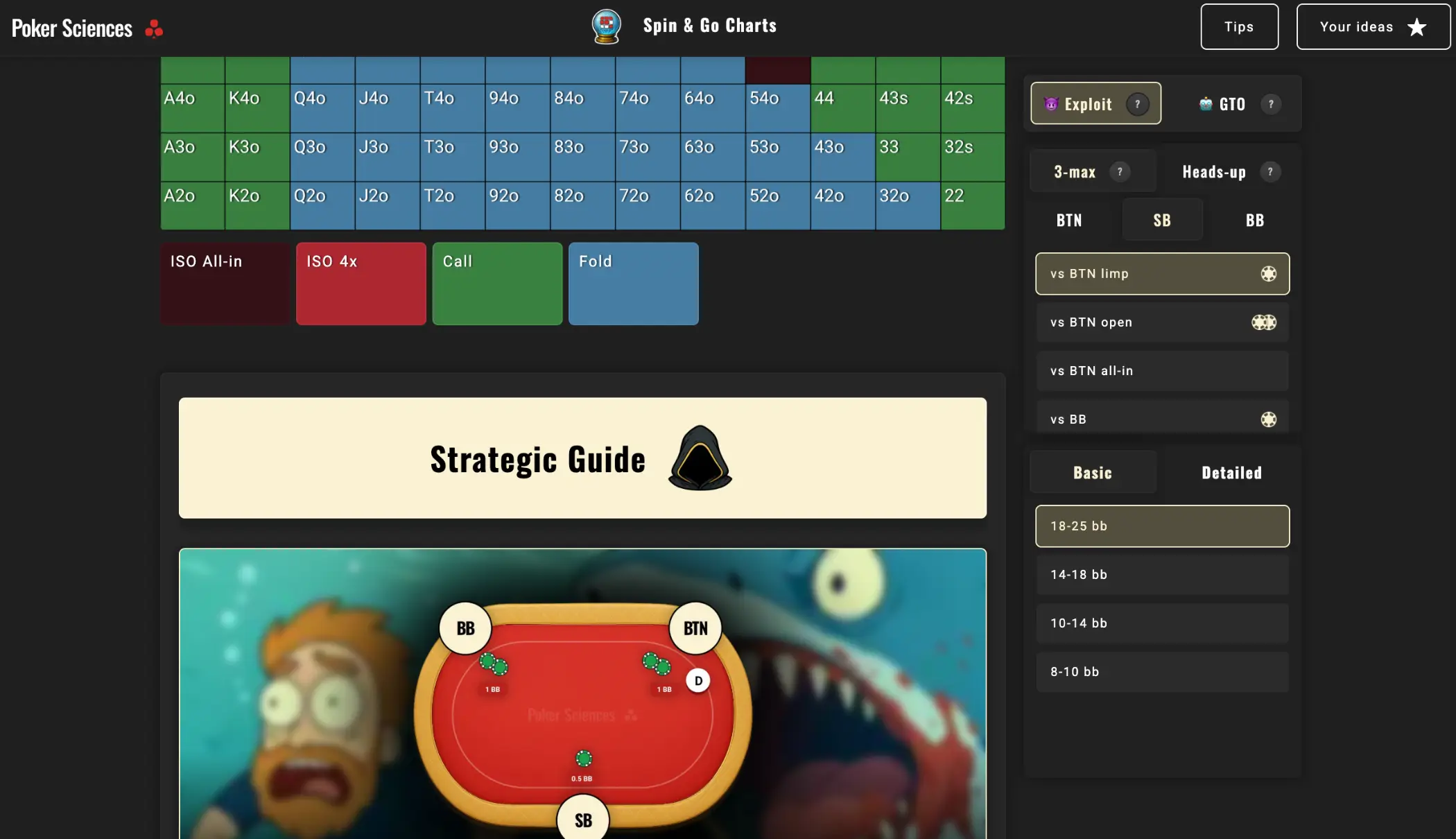
💡 And don’t hesitate to work in split screen: open the Strategic Guide on the right and the corresponding range chart on the left.

And above all – play! But play fewer tables at a time to really take the time to absorb each situation.
As you've probably noticed, each chart is available in two versions: Exploitative and GTO.

The GTO strategy is mathematically balanced, designed to be unexploitable in the long run.
➡️ However, this strength is also its weakness: it is often less profitable against recreational players who significantly deviate from optimal play.
In contrast, the Exploitative approach works in a targeted way: it detects imbalances in your opponent’s play — for example, folding too much against 3-bets — and adapts decisions to maximize profit.
But beware. Many players wrongly believe that:
Both of these widespread ideas are false:

All of our Exploitative ranges are built on data from over 1 million hands played against recreational players and analyzed with the solver HRC.
They are therefore based on solid data and rigorous calculations, and I have personally tested them over tens of thousands of games.

When to Use Exploitative vs. GTO Play
To keep it simple:
Understanding the concept of the Effective Stack is essential for using both the Charts and the Trainer.
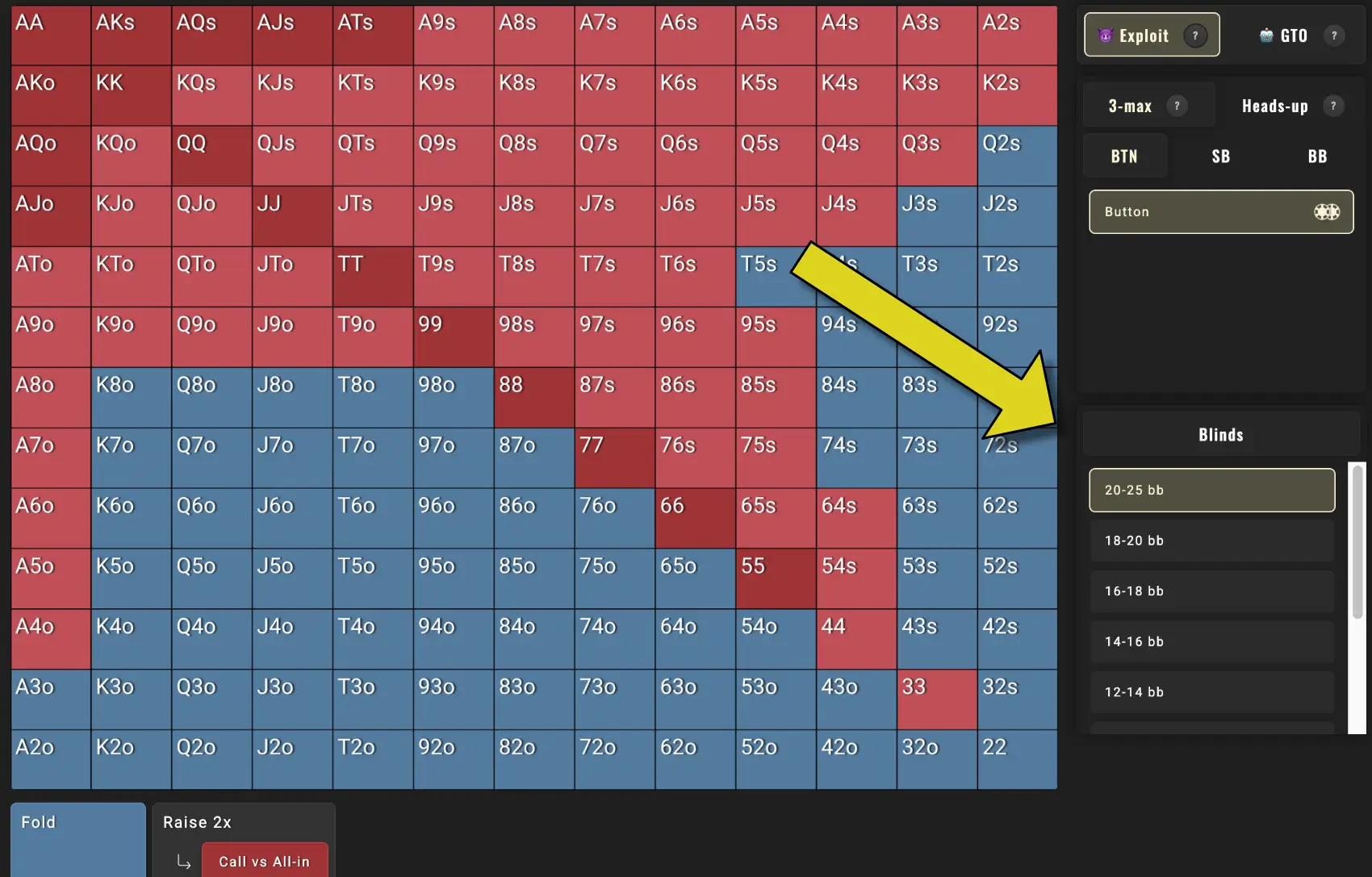
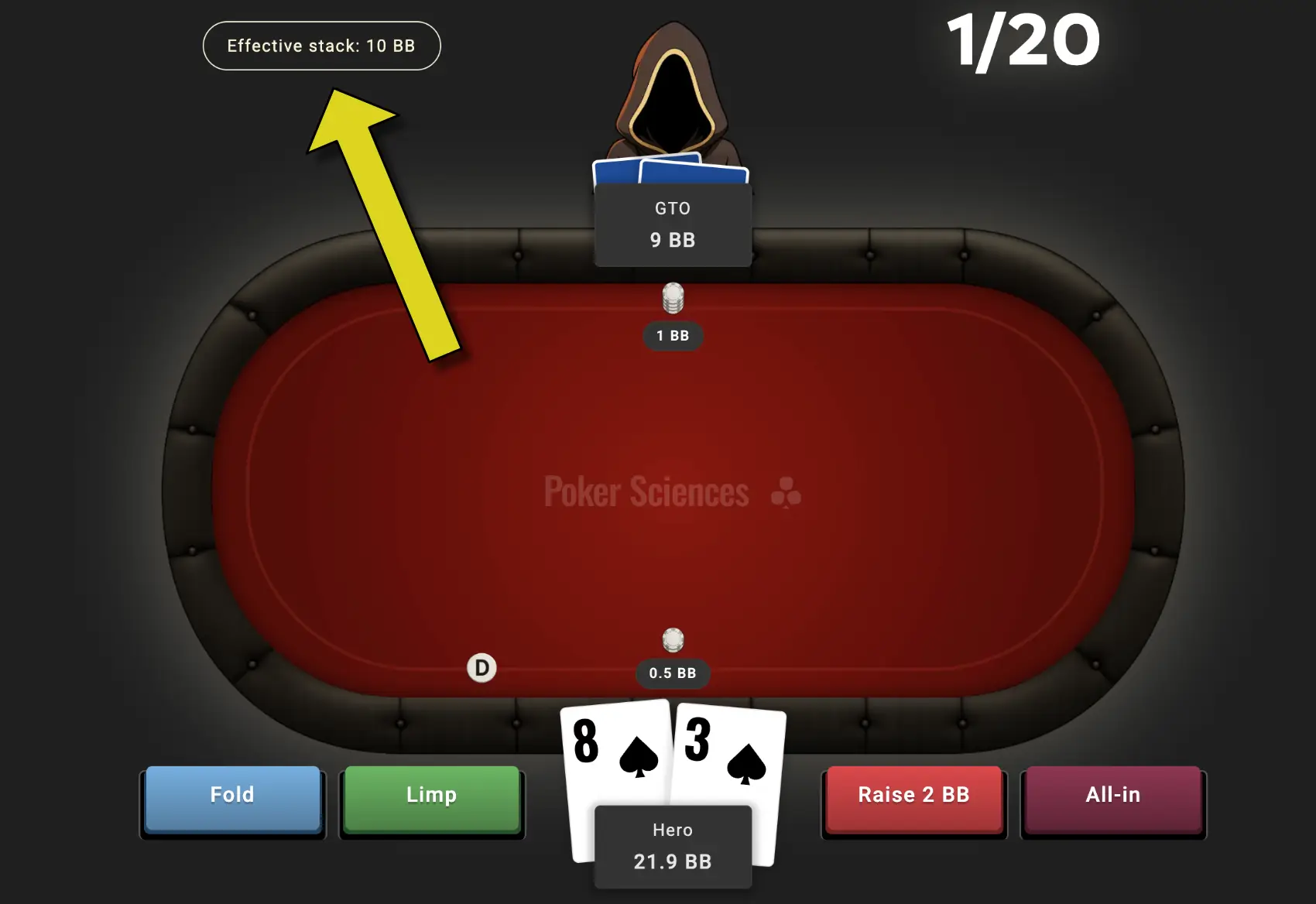
There are two cases to consider:
In heads-up play, the calculation is simple: the effective stack is the smaller of the two stacks, since you can’t win or lose more than that smaller stack.

It’s a bit more subtle: your effective stack depends on the players still involved in the hand.
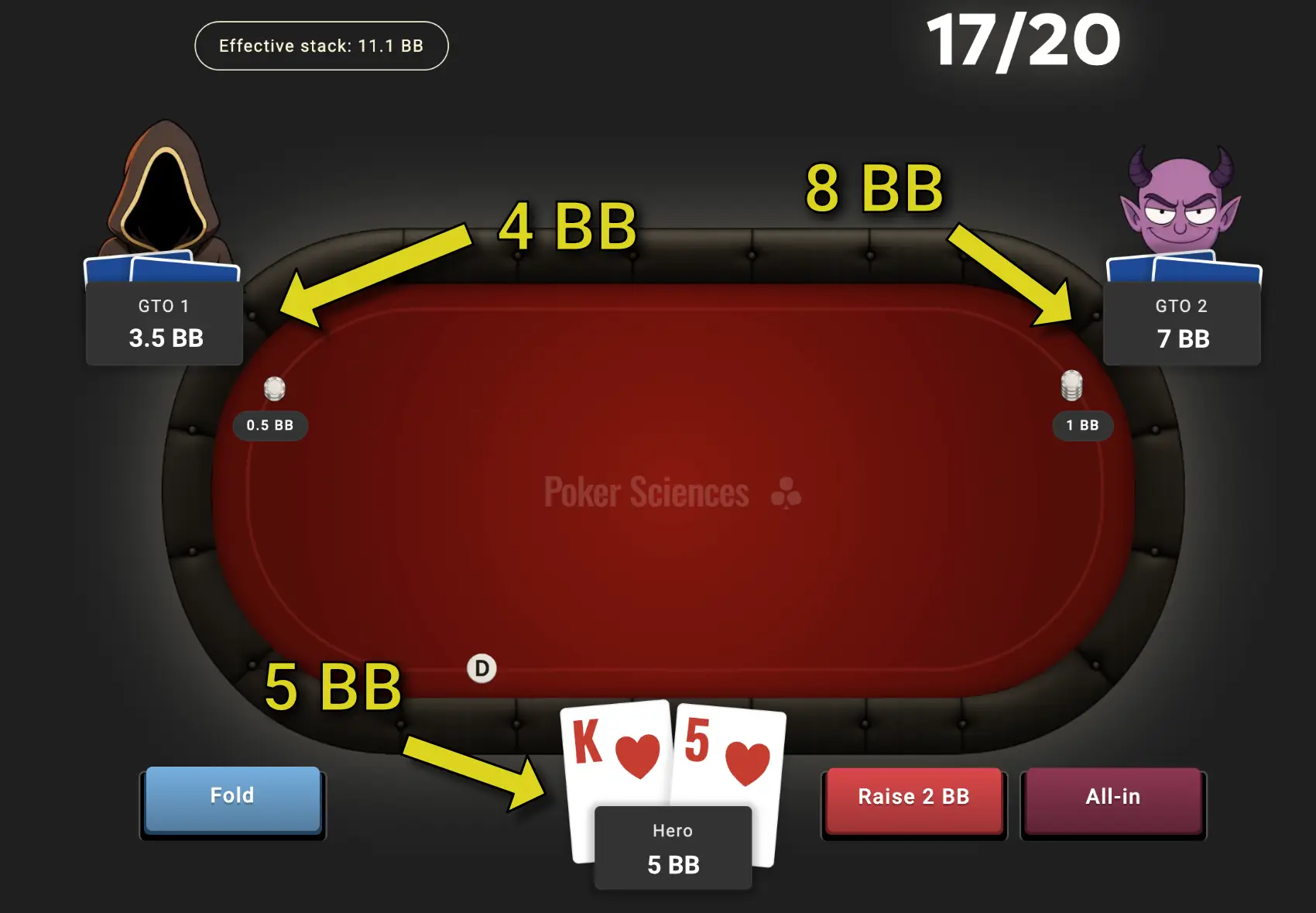
For example, in the situation below:
In our Strategic Guides, we use a lot of abbreviations and poker terminology.
These are standard terms in poker, but if you're not yet familiar with them, here's a glossary to help:
This brings us to the end of this help page.
You now have a powerful tool in your hands to improve in Spin & Go and evolve your game.
It’s up to you to make the most of it.
By moving forward step by step, with consistency and curiosity, you’ll see real results, grow your confidence… and your stack.
So keep learning, keep playing, keep improving — and above all, never lose the enjoyment that brought you here.
Good luck at the tables!